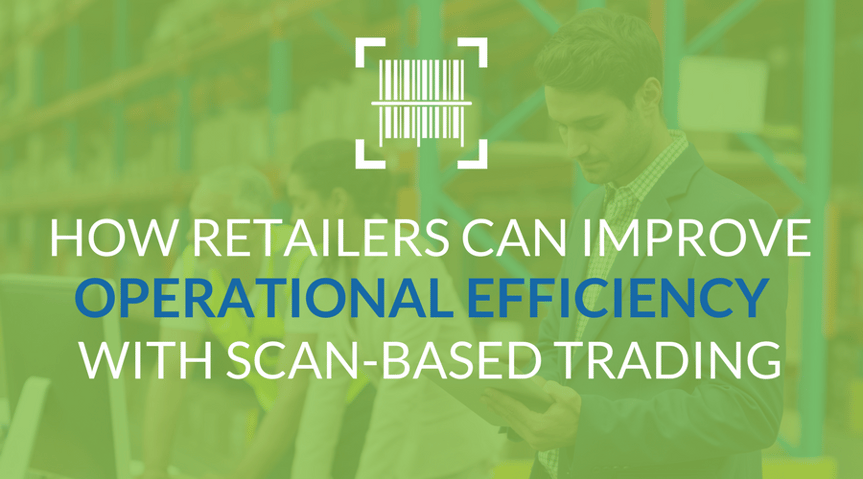
For many retailers, the biggest cause of inefficiency comes down to the way their stock is managed. Poorly managed stock rooms can eat into profit margins, force staff to spend hours dealing with time-consuming administrative tasks, and, ultimately, expose the business to unnecessary risk.
In this blog, we’ll look at the trend towards scan-based trading, what it means for retailers, and the potential it has to dramatically improve operational efficiency.
Pay For What You Sell, Not What You Have In Your Stockroom
Scan-based trading enables retailers to manage stock costs more efficiently. Rather than paying in bulk for the stock you receive, with scan-based trading, you only need to pay for the stock that you scan out in a sale. This doesn’t just impact the way you manage your own stockroom—it ensures that your suppliers contribute to your operational efficiency too. With the time-sensitive stock like newspapers, suppliers will be less inclined to send the excess stock to increase their return, since they won’t make any money from a product that doesn’t leave your stockroom. Since you won’t be sending the non-selling stock back to the supplier, you’ll enjoy more accurate and efficient stock replenishment and reduction. With scan-based trading, sales for both retailers and suppliers can increase by as much as 10%.
Automated, Subscription-Model Reports Save Time And Boost Business Growth
Generating stock reports can be a time-consuming and frustrating process when done manually. When you use a scan-based trading model, however, it’s possible to generate reports on-demand with the click of a button, so you can spend more time carrying out business-critical tasks and building your retail brand. iControl makes it possible for a selection of key Harmony reports to be sent to your inbox as a fully customizable subscription service, so you spend less time worrying about putting reports together and more time extracting insights from them.
Improved Sales Revenue, Reduced Risk
No company wants to take on unnecessary risk, and suppliers are no different. Your supplier’s risk-reduction efforts can be chaotic. As the retailer, the loss of a newspaper sale brings other losses with it. The average newspaper buyer is likely to purchase additional items along with their daily paper—which could have a more profound impact on your balance sheet than you thought. A national retailer who loses just 5% of supply could end up losing as many as 500,000 sales annually.
A Collaborative Approach And Automated Processes Improve Shrink Management
When you use scan-based trading software with automatable features, all inventory information is centralized in a single location, accessible to category managers, retailers, suppliers, and store personnel. This boosts operational efficiency by making your inventory data available to all stakeholders from anywhere they have access to the internet.
Eliminate Inefficient Processes Like Time-Consuming Back-Room Check-Ins
Suppliers who use scan-based trading own all products, even at a stock-room level, which does away with the receiving process. This can save retailers up to half an hour per delivery, which quickly adds up to many hours in the long-term. Wider timeframes for receiving and less time spent checking in new stock also means you have more time to increase operational efficiency by managing your shop floor, serving customers, and improving store stock position.
If you’d like to find out more about how iControl’s scan-based trading services can improve operational efficiency in your retail business, download our free guide at the link below.
